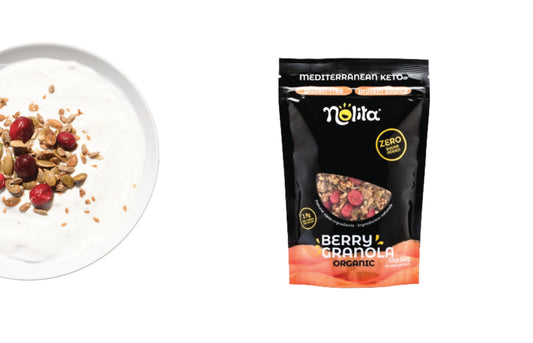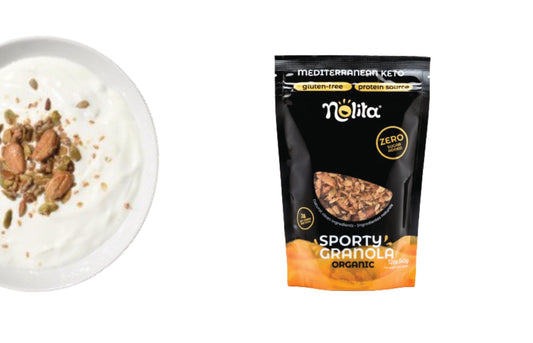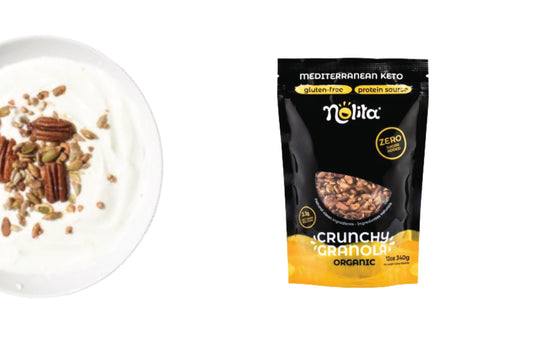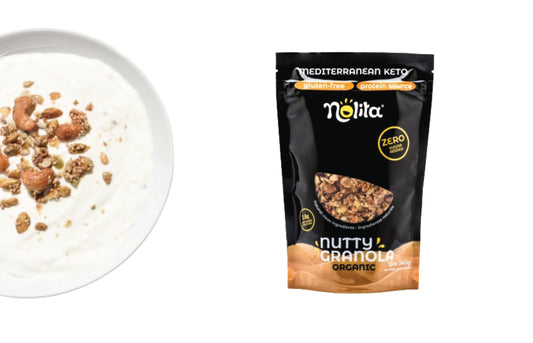The line between a food allergy and a food intolerance can be very fine for most people. In this article we will explain to you the differences between a food allergy and a food intolerance and what foods can cause them.
It is estimated that in Portugal, in a decade, food allergy has increased by 18%, with a 50% increase in children, where this disease is more prevalent (1). In parallel, a quarter of the Portuguese population has some type of food intolerance, which develops with age (2).
The panorama of food allergies and intolerances has gained great prominence given its exponential growth in the population. Is it allergy or intolerance?

Image 1:There are foods that cause food allergies or intolerance.
What are food allergy and food intolerance?
Food allergy is the result of a specific immune response that occurs systematically upon exposure to a particular food. Food intolerance, on the other hand, is the set of non-immune reactions that include metabolic, toxic, pharmacological, and undefined mechanisms (3).
In other words, in the case of allergy, the body mistakenly recognizes a protein as an aggressor and uses antibodies to defend itself. This aggressor is the allergen and responsible for causing the allergy. It is therefore an adverse and exaggerated reaction of the immune system (4).
In contrast, intolerance does not involve the immune system. Rather, it is an adverse reaction that results from the ingestion of a certain food. It results from a digestive problem or a response to substances that are present in the food (naturally or added)(4).
What are the most common types of food allergies and intolerances?

Image 2: The most common types of food allergies and intolerances.
The foods on the list above are responsible for 90% of allergic reactions, with other allergens having a lower prevalence, such as celery, mustard, or lupin (1).
What is the difference between milk allergy and lactose intolerance?
Simply put (4):
- Milk allergy occurs when the immune system recognizes the proteins present in this food (casein, lactalbumin and lactoglobulin) as "foreign," triggering a set of allergic reactions to defend itself;
- Lactose intolerance occurs when the body is unable to digest this sugar, which is naturally present in milk. This happens because lactase, the enzyme that digests lactose, is missing in the body.
With this, in cases of milk allergy, it is necessary to remove all foods that may contain milk or traces of it. However, in cases of lactose intolerance, most of these do not need to adopt a totally lactose-free diet (4).

What are the symptoms of food allergy and food intolerance?
The symptoms of a food allergy are diverse and can range from moderate to severe and even fatal, with skin, respiratory, digestive and cardiovascular symptoms standing out. In some cases, however minimal contact with the allergen may trigger an anaphylactic shock (a sudden, generalized reaction throughout the body that can lead to death) (4).
As for the symptoms of a food intolerance, digestive symptoms, headaches, joint pain, fatigue, and general malaise are common (1).
How are food allergy and food intolerance diagnosed?
The diagnosis of food allergy should be made by an immuno-allergologist, based on the clinical history and through complementary examinations. On the other hand, as for the diagnosis of food intolerance, this is done by experimentation and "trial and error" with the foods thought to be causing the intolerance (1).
How are food allergy and food intolerance treated?
In both cases, the first step is food avoidance, i.e. excluding from the diet both the food causing the illness and other foods that may contain traces of it. To do this, it is essential to read the labels of prepackaged food products to identify the allergens present (1,4,5). Allergens are highlighted prominently (in capital and/or bold letters) in the list of ingredients of the products.

In addition, anyone diagnosed with a food allergy should carry an adrenaline kit and an antihistamine medication. This will enable any anaphylactic reaction caused by an allergic reaction to be countered (4).
As for food intolerances, the safest thing to do is to test and evaluate, varying the doses of the food that is not tolerated. This is because, from the outset, smaller doses distributed throughout the day may not trigger adverse symptoms (4).
However, it is important to prevent and avoid nutritional deficits that may occur by excluding a certain food (1). Thus, in these cases, monitoring by a nutritionist is essential for a better quality of life.
Conclusion - to retain:
Thus:
- Food allergy occurs more frequently in childhood, although it occurs continuously throughout life;
- Food intolerance develops with age;
- The immune system is involved in food allergy, but is not involved in food intolerance, and this is the main difference between these diseases;
- The diagnosis of food allergy should be made by a physician, based on clinical history and through complementary tests;
- The diagnosis of food intolerance should be made by "trial and error" phases;
- It is essential to read the labels of pre-packaged food products to identify the allergens present in them and make informed choices that do not put your health at risk.
Photo: Tom Hermans
Bibliography:
Pádua I, Barros R, Moreira P, Moreira A, Graça P, Carrelhas H. Alergia alimentar na restauração. Direção Geral da Saúde; 2016.
Lusíadas. Intolerância alimentar: identifique os sintomas. 2022. Available in: https://www.lusiadas.pt/blog/doencas/sintomas-tratamentos/intolerancia-alimentar-identifique-sintomas.
Gargano D, Appanna R, Santonicola A, De Bartolomeis F, Stellato C, Cianferoni A, et al. Food Allergy and Intolerance: A Narrative Review on Nutritional Concerns. Nutrients. 2021; 13(5)
Ciência MdEed. Alergia Alimentar. 2012.
Luz Hd. Alergia alimentar e intolerância alimentar. 2020. Available in: https://www.hospitaldaluz.pt/pt/dicionario-de-saude/alergia-alimentar-e-intolerancia-alimentar.





